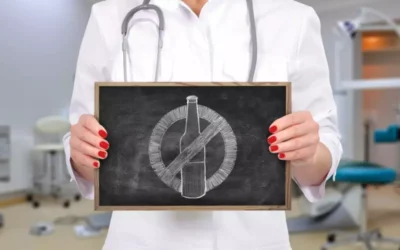Ecstasy Addiction: Symptoms, Effects & Rehab Treatment
This news release contains forward-looking statements and forward-looking information within the meaning of Canadian securities legislation (collectively, “forward-looking statements”) that relate to Optimi’s current expectations and views of future events. Forward-looking statements made in this news release include the proposed use of the proceeds of the Offering. No assurance can be given that these expectations will prove to be correct and such forward-looking statements included in this news release should not be unduly relied upon.
What is MDMA?

The petition cites media reports and public statements from figures at Lykos and MAPS — and disclosures from a former employee of the MAPS public benefit corporation “who prefers to maintain anonymity at this juncture.” In it, they ask for extended time for stakeholders who are concerned How Long Does MDMA Stay in Your System about the “risks and shortcomings” of the research. The ICER report points out that therapists and participants in the study were “pulled heavily from the existing community of those interested and involved in the use of psychedelics for possible psychological benefits.”
Acute Effects

Seven days after training, mice were returned to the training context, off drug, for a 5-min context test. Freezing behavior during the test was used to measure long-term context memory. One day after context testing, mice were brought to the alternate context, off drug, for a 5-min tone test. Tone testing consisted of a 2-min baseline period, followed by the presentation of 3, 30-s tones identical to the training tone each separated by 30s. Freezing behavior during the tone presentations was used to measure long-term tone memory.
Ecstasy Addiction: Mental, Physical & Behavioral Effects of Ecstasy
- Alongside these sessions, people will receive 12 therapy sessions without MDMA.
- Depending on a number of factors, including body weight, gender, amount taken, and method of administration, ecstasy’s effects can last up to 8 hours.
- Simultaneously, the changes that occurred to your serotonin levels aren’t corrected right away.
- MDMA may help people receiving therapy access traumatic memories more easily, allowing them to work through them with less anxiety or stress.
- A 2020 pilot study of 18 participants investigated MDMA therapy as a treatment for anxiety in people with a life threatening illness.
The FDA has set a priority review deadline of August 11, 2024, to return a decision. If approved, the ruling would mark the first federally supported psychedelic-assisted therapy available to patients in the United States to date. Thus, after detox, treatment, which can take place in a variety of settings, continues. The study found that MDMA therapy reduced anxiety more than those in the placebo group. However, researchers require larger-scale clinical trials to show whether it has the potential to be an effective treatment. The FDA has also allowed an expanded access program for MDMA therapy, which means people who have life threatening, treatment-resistant PTSD and are unable to take part in clinical trials can access MDMA therapy.
Review Psychotropics help us map our minds. They might also bring us together. – The Washington Post
Review Psychotropics help us map our minds. They might also bring us together..
Posted: Thu, 10 Aug 2023 07:00:00 GMT [source]
That can drive up body temperature, especially since MDMA itself interferes with your body’s ability to naturally regulate temperature. MDMA is metabolized by the liver into a secondary substance, which has a longer half-life. It can take up to four days for this secondary substance to leave the body. The forced swim test is a model of depressive-like behavior and is https://ecosoberhouse.com/ used to screen for antidepressant drugs in rodents (Porsolt et al. 1977). In this test, animals are placed into a tank filled with water and time spent mobile (i.e., animal is active as it attempts to escape the stressful environment) versus immobile (i.e., “behavioral despair,” animal is passive as it loses hope to escape the stressful environment) is measured.
- Repeated studies show that MDMA can make it easier for someone to approach therapy with vulnerability and an open mind.
- Recovery support groups may be effective in combination with behavioral interventions to support long-term recovery.
- Forward-looking statements made in this news release include the proposed use of the proceeds of the Offering.
- Additionally, some researchers have suggested that MDMA might be useful as a treatment for some mental conditions, such as PTSD and disordered eating.
Most of those in the MDMA group were able to identify they had received the drug. It also suggests the method used to assess PTSD — considered the gold-standard — showed improvements in symptoms after the treatment, even though some people were worse overall. The current studies aren’t in agreement as to whether MDMA can cause addiction. Since MDMA is currently an illegal substance, many reports about its health effects are anecdotal, and study results are often controversial.

What Is Ecstasy?
MDMA therapy is still undergoing research on how safe and effective it is. MDMA therapy has not yet had approval from the FDA as an available treatment option. To treat PTSD, a healthcare professional will deliver therapy sessions with the use of MDMA in three 8-hour sessions. The Food and Drug Administration (FDA) has classified MDMA as a breakthrough therapy, which supportsfurther research and development of MDMA therapy. Healthcare professionals administer a regulated dose of MDMA in a controlled setting to treat specific psychiatric conditions that research suggests MDMA may benefit. This article examines the current research behind MDMA therapy, its uses, and what the process of MDMA therapy may involve.
- The notion of whether or not a particular substance is “addictive” depends on the subjective interpretation of the word.
- Optimi undertakes no obligation to update or revise any forward-looking statements, whether as a result of new information, future events or otherwise, except as may be required by law.
- “My mind was free for the first time from everything else, and I just soaked up all this knowledge.” Those classes were the first step toward earning his degree in psychology.
- A higher level of these neurotransmitters causes changes in the brain.
- According to the National Institute on Drug Abuse (NIDA), some people who use molly on a regular basis may experience symptoms of dependence and withdrawal.
Individuals who chronically use ecstasy and develop these issues would be diagnosed with a substance use disorder. According to the American Psychiatric Association (APA) and the number of other professional organizations, such as the American Society for Addiction Medicine (ASAM), an individual who has developed a severe abuse problem with ecstasy would qualify for a diagnosis of a hallucinogen use disorder. A diagnosis of a substance use disorder reflects a dysfunctional and harmful pattern of substance use that is a more realistic reflection of what the term addiction is supposed to represent. This week’s advisory committee news comes at a time when numerous U.S. government agencies are discussing support of psychotropic drugs for therapies treating maladies ranging from PTSD to drug addiction to end-of-life care. In April this year, a group of Republican and Democrat congressional lawmakers came together to ask the U.S.
Psychedelic drugs may launch a new era in psychiatric treatment, brain scientists say
The public advisory meeting headed up by the FDA’s Psychopharmacologic Drugs Advisory Committee is scheduled for June 4. It is another significant move forward for MDMA-assisted therapy being made available to patients suffering from PTSD. In MDMA therapy, healthcare professionals administer a regulated dose of MDMA to people receiving therapy.




